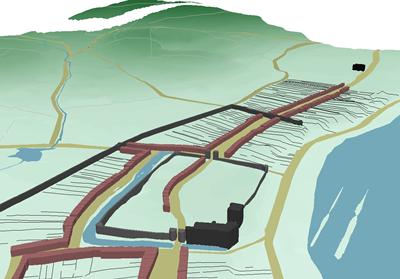Witnessing a medieval city

The ‘City Witness’ research project sees life in medieval Swansea through a 13th-century text.
Work is progressing on the AHRC-funded research project ‘City Witness: Place and Perspective in Medieval Swansea’, led by Professor Catherine Clarke in the English Department at the University of Southampton. The project research is already revealing new insights into the medieval town and how its inhabitants navigated and understood the space around them.
Harriett Webster, the project’s postdoctoral researcher, who is also based in the English Department at Southampton, has recently made a trip to the Vatican Library to look at the original medieval manuscript which forms the basis of the project work. This manuscript, produced as part of the canonisation proceedings for St Thomas de Cantilupe, compiles nine medieval witness statements describing the hanging of William Cragh in Swansea around 1290.
Together with collaborators in the Department of Geography, Archaeology and Palaeoecology at Queen’s University, Belfast, the team have begun reconstructing the medieval town, and locating witnesses within it. This allows researchers to explore their locations, sight-lines and perspectives within the urban environment. So far, it’s been interesting to see how visible the gallows – a symbol of the Anglo-Norman lord’s power and vengeance – is from almost all parts of the town, and how certain individuals (such as Welsh people, or women) are only able to move within very restricted areas of the town.
